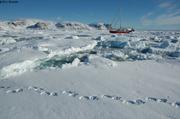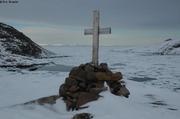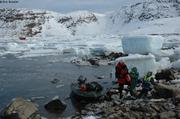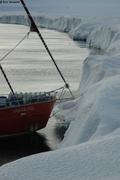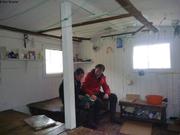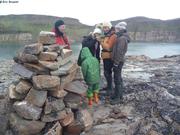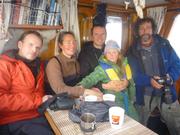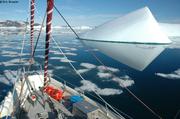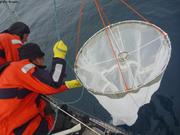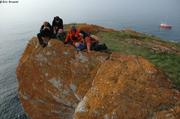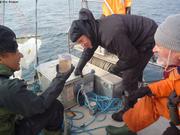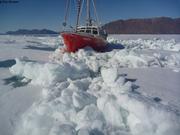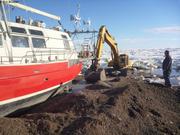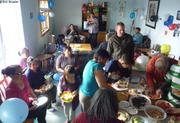Fram Haven
Rosse Bay. We are fighting in the ice and getting to our usual positions, one in the crow's nest guiding the other one steering. But soon we must moor Vagabond to an ice floe, the largest possible, because of 15 knots of wind making dangerous our progression. So moored, Vagabond is drifting gently, a few miles south of Pim Island that we would like to explore. The next day is very quiet, beautiful weather, we walk around our ice floe, it is like a maze with many melt ponds already refrozen. Temperatures are dropping below zero. This morning a bear came close to us, seals are sighted, and even a cabin on a hill, probably built during a scientific expedition. It's only after 36 hours of drifting that Vagabond can finally make her way to Pim Island. Behind us, heavy pack ice. In front of us, Rice Strait between Pim and Ellesmere Islands. We pass Fram Haven, a small bay where Bart Veldink (Dutch sailor) spent last winter alone aboard his sailboat "Tranquilo"... A huge ice floe is blocking the exit of the Strait. Vagabond is moored to the ice again, and thanks to it we can reach Pim Island, already very snowy (end of August!). Historical site, everyone is thinking of the suffering members of the Greely Expedition, 130 years ago.
Looking for a way out, we return to Rosse Bay, no luck, too much ice, so back to the ice floe that is still closing the exit of Rice Strait. Summer is cold this year in the Arctic, conditions are stopping many sailors. Near the North Pole Babushka just trigger her emergency beacon. A few days earlier, Tooluka renounced the Northwest Passage...
Finally, we find refuge in Fram Haven. Beautiful. Sverdrup and his crew had wintered there in 1898-99 aboard the Fram. A cross was erected on a rock at the death of Svandsen, the expedition's doctor. We also find the remains of a cabin of the Royal Canadian Mounted Police.
Hesitation on the best strategy: the ice is drifting gently into the strait, the sea surface is freezing, the forecast is easterly winds... We had not planned to spend the winter here!
